If you’re a regular driver, you may have had the bad luck of experiencing a broken tire bead.
Hitting the curb or pothole, or even a quick sharp turn can result in an unseated tire bead, making the tire impossible to re-inflate.
Reseating the bead by taking it to a workshop might not be the most viable option when you’re left stranded in the middle of a road.
But do not worry because there is a rather quick (albeit dangerous) fix to pop a tire back on the rim.
All you need is some combustible fluid, a source of ignition, and a little faith in science. Just spray a little starter fluid outside the rim, and light it on fire. The expanding gas will push the sidewalls of the tire up and out, causing the tire bead to snap back into place.
You would require the following items to perform this task:
Follow the steps outlined below to properly seat a tire back on the bead:
Step 1: Lift the tire up from the groundElevate the wheel off the ground with the help of a jack. If you’ve already disassembled the wheel, place the rim inside the tire and lay it flat on the ground.
Don’t have a jack?
Well, don’t worry you can check out our guide to jacking up a car without a jack!
Carefully spray some starter fluid in the cavity created by the rim and the sidewall of the tire.
Make sure you don’t spray too much of the liquid as that might damage the sidewall of the tire.
Once you’ve sprayed it around the entire bead, spray a little off the edge of the tire and onto the floor in a straight line.
Be extremely cautious with the amount of fluid that you spray onto the wheel.
Starter fluid is highly flammable. Using exorbitant amounts of such combustible liquid can cause a fire that might be difficult to contain.
Due to this reason, always keep a fire extinguisher nearby.
Using a lighter, matchstick, or whatever source of ignition you have, light up the starter fluid starting from the link you previously made on the ground.
This step must be carried out immediately after spraying the tire bead so that the fluid does not evaporate away.
You might want to step back and distance yourself a bit after this step as it will cause an explosion.
The fire will cause the gases in the wheel to ignite and expand rapidly.
This sudden expansion of gases (an explosion) will cause the tire beads to move along the wheel and catch the grooves, seating them back in place.
As soon as you hear a popping sound, put out the fire as soon as possible.
This indicates that your tire is seated back onto the rim.
Finally, pump air into the tire using an air pump and you’re all set to hit the road again!
There are some disadvantages that come along with this method of popping tires back onto the rim. If not done properly, this can result in Pyrolysis, which is basically the thermal decomposition of the tire.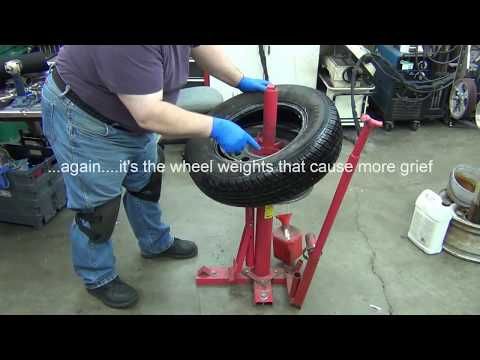
Pyrolysis can not only cause chemical deterioration of the tire over time but can also lead to a full-blown-out explosion.
The pressure inside may rise up to 7000 kPa and seriously injure anyone in close proximity to the tire.
Watch this video to learn the science behind using fire:
This is why you must always put off the fire as soon as you hear the ‘pop’ sound – usually a couple of seconds after you light up the fire.

Any kind of clicking or popping sound from your car’s tires is a cause for alarm, and something not to be taken lightly.
Sounds coming from a vehicle’s wheels might be due to an underlying problem in one (or more) of the following parts:
In order to find out the exact cause of trouble, you would need to take the car for a road test.
However, before you do that, make sure that there isn’t something dangling off your vehicle or a broken car part causing the noise.
Using fire might be a convenient way to pop your tire back onto the rim, but it surely isn’t the safest. Playing with combustible fluids and fires can be very risky and dangerous if you don’t know what you’re doing exactly.
Always try to seek help from a professional first, and if that isn’t possible, only then should you try pulling off such a feat. Just make sure that you abide by all the necessary safety protocols, and you should probably be fine.
(Visited 5,616 times, 6 visits today)
| How-To - Wheels and Tires
We usually carry spares. Tires that is. We hope they always remain spares and that we never have to use them. However, there's always the chance you have no spare or already damaged one tire, and now have a tire that's jumped off its wheel bead. It's rapidly lost all air and you have to find a way to get it reseated on the wheel and re-inflated.
It's rapidly lost all air and you have to find a way to get it reseated on the wheel and re-inflated.
If you stick to running street pressures in the dirt, it's highly unlikely you'll push a tire off the wheel bead. But airing down is an off-road necessity in many cases and without beadlocks there is some risk of popping a tire bead. When bead retention fails it almost always occurs on the outside wheel bead and very often on the downhill side of the vehicle where the weight of the vehicle is pressing the hardest on the tire sidewall. Other times, when bouncing laterally in deep ruts, a tire can be slammed sideways hard enough to blow the tire off the wheel bead.
A tire that's been knocked off the outer wheel bead can often be reseated, re-inflated, and then you can be on your way again. If the tire has come unseated from both the inner and outer wheel beads, you've got a bit more work on your hands to get both sides sealed again. In this situation, a large ratchet strap tightened around the middle circumference of the tire may help get the tire beads pushed outward a bit for a better chance of seating. Wider wheels also make reseating more challenging.
Wider wheels also make reseating more challenging.
Getting the tire completely back on the wheel and re-inflated requires cleaning the bead surfaces on the tire and wheel, getting them pulled together, and getting sufficient air inside to inflate and seal the tire back on the wheel. It can be done in the boonies with a little technique and a good shot of air.
The first thing you must do is get the tire fully off the ground and high enough so it has room to be inflated without touching the ground. Short of this, there's no way to get the tire pulled back out towards the wheel bead for reseating. In most cases, it's easier to work with the wheel on the vehicle, using the rig as a solid anchor to hold it while you pull on the tire.
When the tire popped off the wheel, there's a good chance dirt or mud got inside it. We're not overly concerned with what got all the way inside, but we do care about debris on the tire and wheel bead areas. Always clean these surfaces before attempting to reseat the tire as debris here can keep the tire from fully sealing and holding air well. Feel free to wash down the bead areas with water which will clean and help the tire slide back on the wheel easier.
Always clean these surfaces before attempting to reseat the tire as debris here can keep the tire from fully sealing and holding air well. Feel free to wash down the bead areas with water which will clean and help the tire slide back on the wheel easier.
The final step of getting the tire back to a serviceable condition is to inflate it. If the backside bead is still in place on the wheel, that's a huge plus. In many cases, a couple pairs of hands pulling the tire towards the outside can get the outer tire bead out where it can start to seal again. Shoot the valve stem with air to attempt to inflate. You'll hear air hissing in locations that are not sealing. Shift your pull to try to get those spots to seal. Once the seal begins, further inflation will cause the tire to pop rapidly back onto the bead seat.
A voluminous shot of air helps greatly when trying to reseat a tire. A CO2 tank, or large air pump with reservoir, works best to get air rapidly back into the tire while trying to get the bead to reseat. A small pump often has trouble getting sufficient airflow into the tire to seat it. We've seen the starter fluid trick help reseat tire beads effectively. It involves shooting a few squirts of starter fluid inside the carcass, then tossing in a match to ignite the flammable material. Once the tire expands onto the wheel from the heated gases, one has to get to the valve stem quickly to get air into the tire for inflation. Often removing the valve core helps get the air inside quicker, but be cautious of hot gases coming back out of the stem.
A small pump often has trouble getting sufficient airflow into the tire to seat it. We've seen the starter fluid trick help reseat tire beads effectively. It involves shooting a few squirts of starter fluid inside the carcass, then tossing in a match to ignite the flammable material. Once the tire expands onto the wheel from the heated gases, one has to get to the valve stem quickly to get air into the tire for inflation. Often removing the valve core helps get the air inside quicker, but be cautious of hot gases coming back out of the stem.
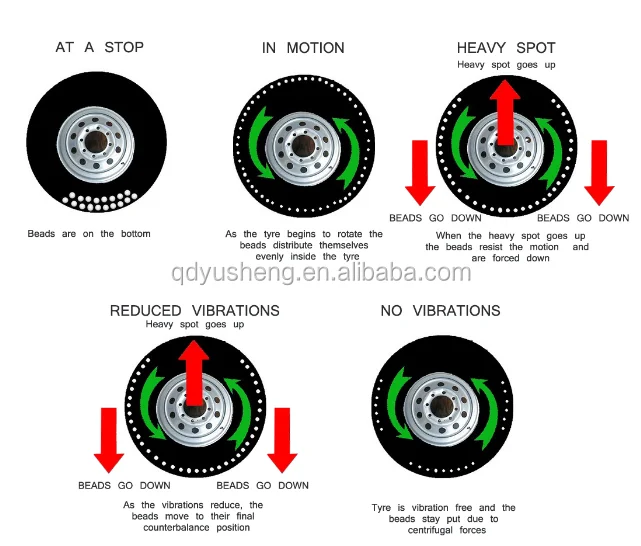 S. in 2022
S. in 2022When landing an aircraft, the landing gear experiences not only colossal static but also dynamic loads taken by the struts and wheels. Add to this that during the flight the wheels were motionless, and when touching the runway, they should quickly gain momentum corresponding to the landing speed. Thus, rather high and strict requirements are imposed on the chassis of modern aircraft.
Aircraft tire and wheel assemblies can operate under high pressure to carry the load placed on them and should be handled with the same care as any other pressure vessel. Multiple carcass plies are bonded together to form a common carcass, making the tire capable of holding internal pressure.
Multiple carcass plies are bonded together to form a common carcass, making the tire capable of holding internal pressure.
By significantly reducing the weight of tires and at the same time increasing the number of landings they can withstand, operating and fuel costs are reduced. The result is a reduction in the negative impact on the environment by reducing CO2 emissions into the atmosphere and using less raw materials.
Suspension struts
The most heavily loaded elements of an aircraft landing gear are suspension struts and wheels (pneumatics).
Suspension struts are used to ensure maximum ride smoothness when driving along the airfield, on takeoff run and run, as well as to dampen shocks that occur at the time of landing (multi-chamber nitrogen-oil long-stroke shock absorbers are often used, in which the function of a spring element is performed by pumped under a strictly defined pressure technical nitrogen). On the multi-wheeled bogies of the landing gear of heavy aircraft, additional shock absorbers can also be installed - stabilizing dampers. Reinforced landing gear is able to withstand impact on the protruding edges of concrete slabs up to 10 cm high when the aircraft is moving at landing speed or a rough landing.
Reinforced landing gear is able to withstand impact on the protruding edges of concrete slabs up to 10 cm high when the aircraft is moving at landing speed or a rough landing.
There is also a system of braces, rods and hinges that perceive the reactions of the supporting surface and fasten the shock absorber struts and wheels to the wing and fuselage, which simultaneously serve as a retraction-release mechanism.
Aircraft landing gear wheels support the aircraft on the ground and provide the means of mobility for takeoff, landing and taxiing. And pneumatic tires, shock-absorbing, protect the aircraft from shock impulses due to surface irregularities and shortcomings in piloting technique during landing.
Wheel disks (drums) are often made of magnesium-based alloys. Usually these are magnesium-zinc alloys, which are very difficult to process, or titanium. Currently, only a few industrial powers in the world can produce high performance fighter aircraft tires.
Complex high-tech structure
Aircraft wheels are designed to make changing tires (tires) easy.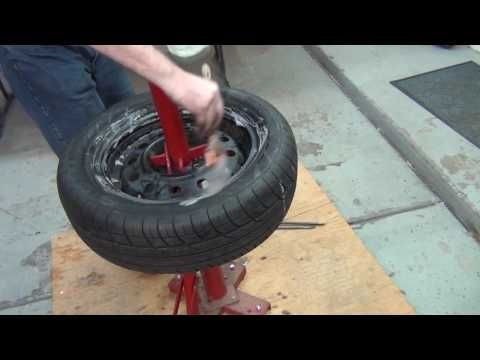 The wheel disks themselves are usually made collapsible, from two halves, which are bolted together. To increase the tightness of the wheels, before assembly, both halves of the disk and the outer sides of the tire are treated with a special adhesive, and only after that they are assembled.
The wheel disks themselves are usually made collapsible, from two halves, which are bolted together. To increase the tightness of the wheels, before assembly, both halves of the disk and the outer sides of the tire are treated with a special adhesive, and only after that they are assembled.
On modern high-speed aircraft, pneumatics are tubeless and are inflated with technical nitrogen (the use of the latter is due to the prevention of gas condensation and its subsequent freezing at altitude, with the formation of dangerous ice, and besides, nitrogen is cheap and does not burn). Aircraft landing gear tire treads have no pattern other than a few longitudinal circumferential bleed grooves to reduce hydroplaning effects, as well as control dimples for easy wear detection. The shape of the tire is close to round in cross-section to ensure maximum wheel contact patch during roll landings. Pneumatics are equipped with disc or shoe brakes with hydraulic, pneumatic or electric drive, for maneuvering when moving along the airfield and reducing the length of the run after landing.
In general, a modern aircraft tire is a complex high-tech structure that operates at high speeds and loads with the smallest possible weight and dimensions.
Aircraft tire capable of withstanding a wide range of operating conditions. While on the ground, it must support the mass of the aircraft. During taxiing, provide a stable, smooth ride while resisting heat build-up, abrasion and wear. During takeoff, the tire structure must be able to withstand not only the aircraft load, but also the forces generated at high roll speeds during the takeoff run. Landing requires the tire to absorb colossal dynamic shock loads. All these processes must be carried out stably, ensuring a long and reliable tire life.
These extreme requirements require a fairly complex tire. A modern aircraft tire is a composite of several different rubber compounds (a mixture of natural and synthetic rubber), textile material and steel. Each tire component serves a specific purpose in realizing its performance characteristics. Aircraft tires are very durable, as they are reinforced with iron cords, nylon, and aramid polymer.
Aircraft tires are very durable, as they are reinforced with iron cords, nylon, and aramid polymer.
The requirements for aircraft landing gear tires and wheels are generally quite strict and sometimes contradictory
For example:
High pressure
It is aircraft wheels that in many ways contain most of the latest inventions put into practice today. By aviation standards, a tire must withstand pressure four times higher than what it is designed for, so theoretically tires can withstand a hard landing at speeds over 450 km / h.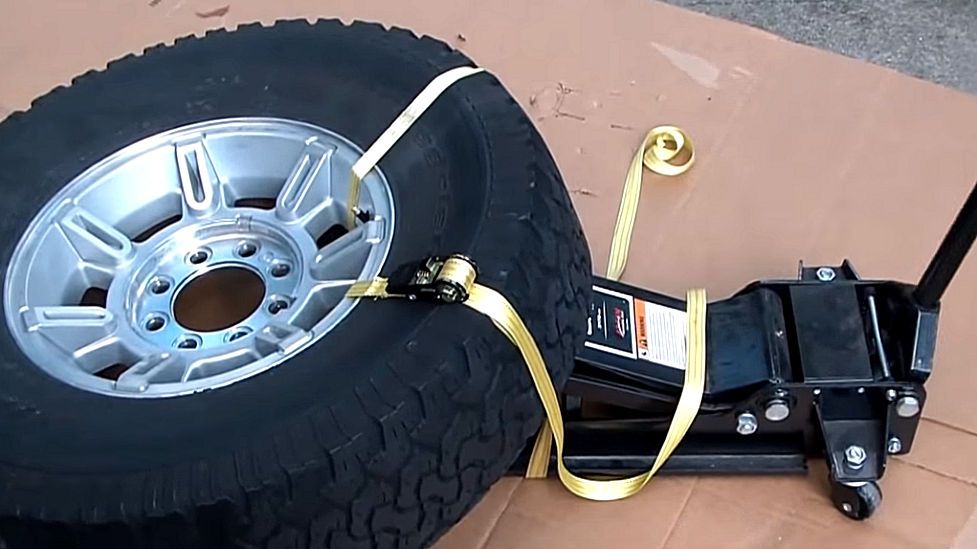
In addition to being subjected to enormous static and dynamic stresses, aircraft tires are also subjected to thermal stress when they are exposed to low temperatures for long periods of time and during landing they quickly pick up speeds of about 300 km/h (some up to 460 km/h). When in contact with the ground, the temperature of the tire rises to 260°C.
Tires withstand temperature difference and load stably. They are designed to resist wear and tear as much as possible. They are multi-layered with a strong nylon and aramid cord located under each layer. Each layer has the ability to withstand enormous load and air pressure. The cord is not intertwined, but arranged in single layers parallel and held together by thin rubber films, which protects the cord from adjacent layers from chafing against each other when the tire is bent during operation.
During tire manufacture, the plies are applied in pairs such that the cords of adjacent plies are at 90° to each other in the case of a crossed (diagonal) tire and from bead to bead at an approximate 90° angle to the centerline of the tire in a radial tire.
To absorb and distribute dynamic loads and protect the casing from impact damage, there are two narrow layers pressed into thick rubber layers between the casing and the tread. These special layers are called belts.
Tire strength index
Tire manufacturers assign a ply rating to each tire. This norm does not directly refer to the number of layers in the tire, but is a tire strength index.
Wire wrap is made rigid by rubber banding all of the wire together, creating a strong bond. The bead wire (the core of the bead) is also strengthened by winding with fabric strips before the application of the main and filler tapes. The main bands, made of rubber and located under the rubberized fabric filler bands, provide more rigidity and less abrupt changes in the bead section. They also increase the contact area.
Under severe braking conditions, the heating of the wheel, tire and brake can be sufficient to cause a tire to burst, with possible catastrophic consequences for the aircraft. Thermal witnesses are installed on some tubeless wheels to prevent sudden rupture. These plugs are installed into the wheel drum using a low-melting alloy that melts under overheating conditions and is pushed out by the increased air pressure in the tire. This prevents excessive pressure build-up in the tire by controlled depressurization of the tire.
Thermal witnesses are installed on some tubeless wheels to prevent sudden rupture. These plugs are installed into the wheel drum using a low-melting alloy that melts under overheating conditions and is pushed out by the increased air pressure in the tire. This prevents excessive pressure build-up in the tire by controlled depressurization of the tire.
Aircraft wheels, like everything related to aviation, are characterized by constant monitoring of their technical condition, so tire pressure is checked every time after landing and before takeoff.
But landings and take-offs have a negative impact on the condition of tires, so aircraft wheels, unlike car wheels, have a relatively short shelf life, and at the slightest suspicion of defects, mechanics must be replaced.
Static and dynamic tests
Static
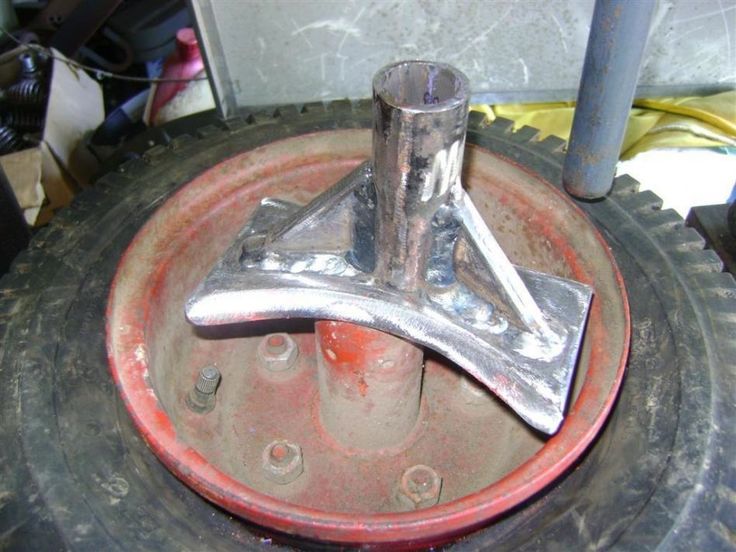
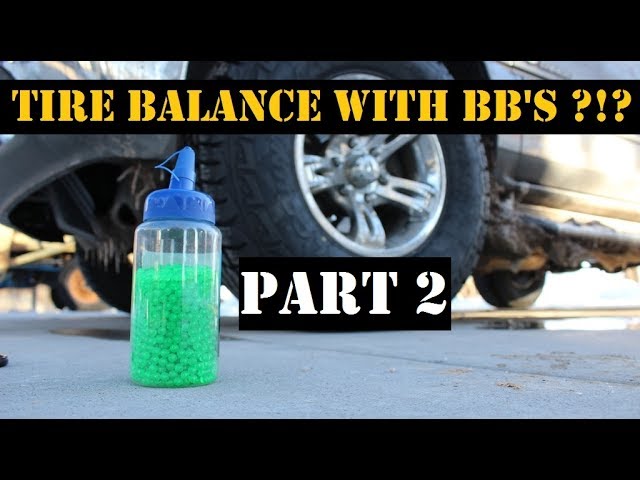 Then the following values are measured: outer width, outer diameter, width and diameter along the shoulder area.
Then the following values are measured: outer width, outer diameter, width and diameter along the shoulder area. Dynamic
Press Digest for December 6, 2019 | Digest of publications for December 6, 2019
The copyright for this material belongs to the journal Science and Technology. The purpose of including this material in the digest is to collect the maximum number of publications in the media and messages of companies on aviation theme. AviaPort Agency does not guarantee the reliability, accuracy, completeness or the quality of this material.
Another season of changing shoes is approaching.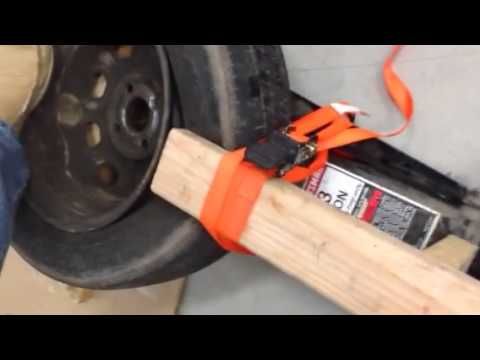 And you may remember that on one of the tires after the last winter/summer there is a jamb - a small bump. I don’t want to run to the store for the sake of one new tire. We understand. Or maybe it looks even better if repaired?
And you may remember that on one of the tires after the last winter/summer there is a jamb - a small bump. I don’t want to run to the store for the sake of one new tire. We understand. Or maybe it looks even better if repaired?
Yes, not every wheel that meets with a nail, rebar sticking out of the ground or a sharp stone on the road is considered damaged. Everything, of course, depends on the scale of the damage and its location on the tire itself. Some are easily repaired, while others are simply impossible to do - the tire can only be sent to the trash.
A bulge on a wheel, referred to by drivers as a bump or bulge, is the most common tire sidewall defect. It appears due to a collision with an obstacle or after falling into a pit, more often at high speed. The threads of the sidewall carcass are easily damaged by impact, and the tire at this point can no longer hold the load and air pressure - swelling appears. A small bump sooner or later turns into a big one, and driving with such a defect is dangerous - the wheel can shoot at any moment. At high speed, this is fraught with loss of control, departure from the road and a rollover.
At high speed, this is fraught with loss of control, departure from the road and a rollover.
The quality of roads in Kazakhstan contributes to the appearance of bulges on tires
Some types of bulges are repairable, although this is a temporary measure. Not a single patch can restore the factory rigidity. Ideally, change the tire.
Special cord patches can extend the life of a tire with a herniation, even if the swelling has appeared on the tread. The sidewall is a different story. If the swelling appeared at a distance of more than 40 mm from the side, it can be repaired. If not, then the wheel needs to be replaced. Blisters on low profile tires are most often non-repairable.
For maximum safety when riding with a repaired bump, insert the tube. This is an inexpensive and reliable solution. On our market, you can find cameras made in China and Russia, the latter are slightly more expensive, but also of better quality.
The elimination of a side cut is a serious operation, therefore, as in the case of a bump, you will have to go to the professionals. We need cord patches, fortunately in our time they are of different sizes and with a different number of layers. And if you do it wisely, then you can't do without special tools and vulcanization.
We need cord patches, fortunately in our time they are of different sizes and with a different number of layers. And if you do it wisely, then you can't do without special tools and vulcanization.
A cut, by the way, cannot be healed in all cases. If the gap is in the shoulder area of the tire, it is unlikely that anyone will undertake to repair it, since no guarantees can be given here. However, our Kulibins take on even the most difficult cases, cutting out parts of the sidewalls from the tires and even weaving the cord on their own.
Tire overhaul. We would not put such a wheel on ourselves
Low profile tires can be repaired, but more difficult. A tear in the sidewall is easier to seal on tires with a medium or high profile.
Sometimes a cut is confused with a pluck. This is when the outer layer of the sidewall caught on something sharp, a tear formed, but the frame itself remained intact. There is nothing wrong with that, although the drivers at the tire fitting company successfully repair the cut, for which they take it accordingly.
If a piece of rubber remains on the sidewall, then glue it with ordinary superglue (101st). If it came off, then it is better to cover it with raw rubber and vulcanize. Leaving the pluck bare is not recommended, because the tire carcass, often consisting of a metal cord, will quickly corrode.
In Europe, defective or used tires are perforated before being sent for scrap to prevent their resale and possible operation. But they don’t know that we have such holes on the sidewall patched once or twice
Cuts and hernias are not the only possible damage to the side of the tire. You can also spoil the side ring, in the process of changing shoes, for example. If it’s for garlic, then such a tire is already dangerous. Sooner or later, the tire pressure and the load in motion will start to squeeze the rubber off the rim - a wheel explosion can occur.
This ailment is repaired if the wire ring - the base - is intact. There are no special technologies and materials to correct this particular problem, but most often craftsmen use a two-component composition for chemical (also called cold) vulcanization. After mixing, the mass is pressed into a fat-free damage. Compound manufacturers recommend waiting 72 hours before mounting a tire. Of course, our masters do not pay attention to this condition - they put the tire right away. And it’s good if the wheel is flat because of this at night in the parking lot, and not on the road.
There are no special technologies and materials to correct this particular problem, but most often craftsmen use a two-component composition for chemical (also called cold) vulcanization. After mixing, the mass is pressed into a fat-free damage. Compound manufacturers recommend waiting 72 hours before mounting a tire. Of course, our masters do not pay attention to this condition - they put the tire right away. And it’s good if the wheel is flat because of this at night in the parking lot, and not on the road.
If the side ring tears are barely noticeable, but the wheel still deflates, then you can use a special liquid - a bead seal designed to seal a tubeless tire.
These seals have been used in motorsport for some time. In particular, in the American Formula D Drift Series, drivers used compounds to keep the tire on the rim even with minimal tire pressure. Now they are banned.
Pay attention to the left rear wheel of the Nissan Silvia S13. Due to too low pressure, it was literally taken off the disk under load
Every schoolchild has faced this problem when patching the inner tube of his bike after hitting something sharp. Repairing a car tire puncture with your own hands will also not be difficult even on the road. But for this you will need a pump (or compressor) and a universal tire repair kit with harnesses. All this is sold at any car market or gas station.
Repairing a car tire puncture with your own hands will also not be difficult even on the road. But for this you will need a pump (or compressor) and a universal tire repair kit with harnesses. All this is sold at any car market or gas station.
Repairing a tire on the side of the road with harnesses
The process is simple. If we are talking about the front wheels, then in most cases the wheel can not even be removed, it is enough to turn the steering wheel in the right direction, find the puncture site and carry out repairs. First, the hole is cleaned with a helical awl from the set. The tourniquet itself is smeared with glue and tucked into the eye of the awl, after which it is inserted into the tire hole. With a sharp movement, the tool is removed, and the tourniquet remains in place and clogs the hole. The tails are cut with a knife, but not at the root, it is recommended to leave about 20 mm. The tire is inflated and checked.
Sometimes a nail or self-tapping screw clogs the hole by itself, remaining in it.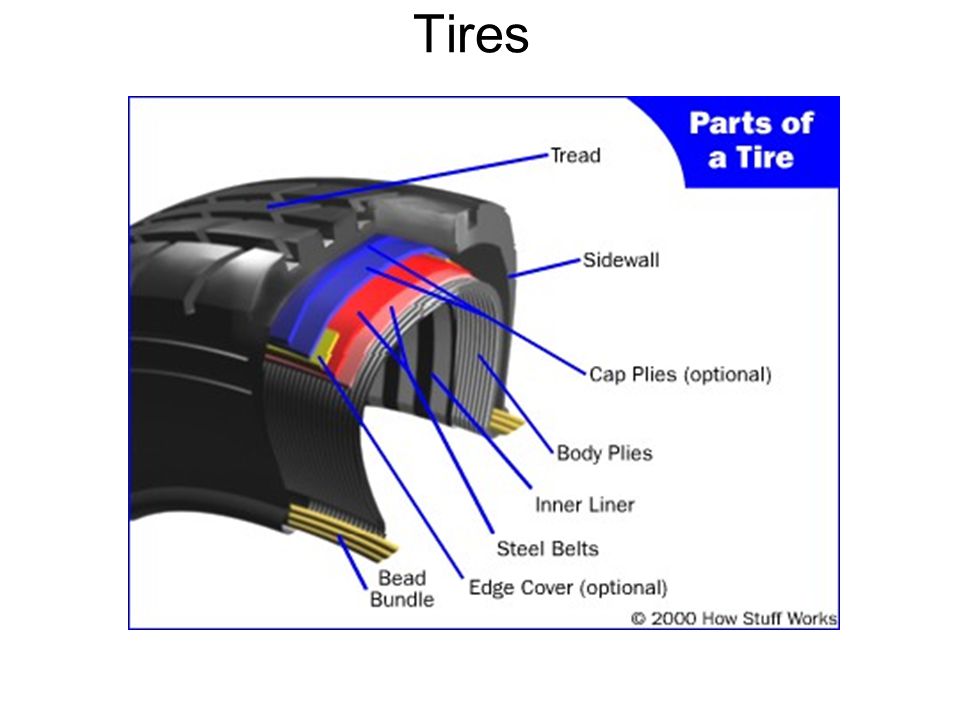 If you see a hat in a tread, do not rush to pull it out. While the pressure is holding, move to vulcanize. And sometimes they drive with a screw in a tire for weeks.
If you see a hat in a tread, do not rush to pull it out. While the pressure is holding, move to vulcanize. And sometimes they drive with a screw in a tire for weeks.
Repair of a puncture at a tire shop
Punctures are also repaired with harnesses at a specialized service, although such repairs are not considered long-term among professionals. After a few months, the flagella dry out and can let air through. There are more advanced methods like cold and hot vulcanization. The latter is more reliable. In this case, the hole is sealed with an elastic patch, and the funnel from a foreign object is filled with a special compound. After that, a vulcanizer is put on the tire, it heats up the rubber and solders it.
In addition to the plaster, the puncture is also repaired with special cord fungi. Craftsmen process the puncture site: drill it and treat the surface with a tool to roughen it. Then the repair area is lubricated with glue (it is also called cement) and a fungus is introduced.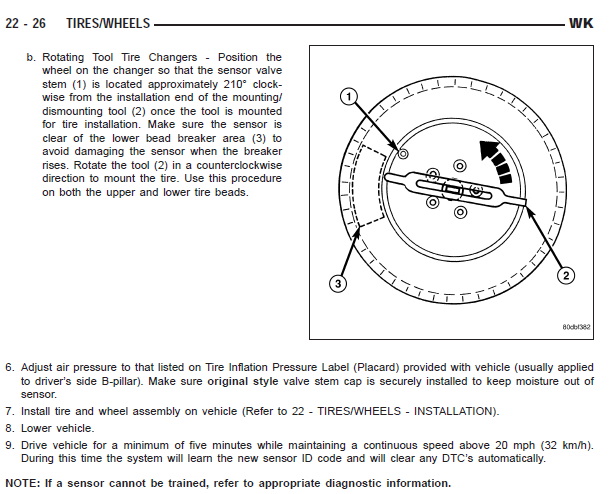 This is done from the inside of the tire. The cap of the fungus is rolled, and the excess legs are simply cut off from the outside.
This is done from the inside of the tire. The cap of the fungus is rolled, and the excess legs are simply cut off from the outside.
Puncture repair with sealant
With the advent of tubeless wheels, and later run flat tires, many automakers began to abandon spare wheels. Instead, repair kits with compressors are supplied with the machines. A repair kit is essentially a bottle of pressurized sealant. Later, such spray cans began to appear on the shelves of ordinary car dealerships.
This method has not taken root in the CIS, because the condition of the roads makes it necessary to have at least a stowaway in the kit, but it can also be considered as a method of repair on the road.
Jack up the car and pump sealant through the nipple into the damaged wheel. Next, you should spin the wheel, then pump it up, lower the car and drive a few hundred meters. If the tire tightness has not been restored, repeat the procedure.
If the tire tightness has not been restored, repeat the procedure.
For commercial vehicles, cutting the tread with a special device (regrower) is a common thing. Moreover, such tire retreading is provided by the factory (marked REGROOVABLE on the sidewall) to increase the service life. But there are entrepreneurs who undertake to deepen the grooves in tires for passenger cars. But they are not intended for such an operation. Often used tires for sale are “refreshed” in this way. Be careful!
What is the threat?
The worst case is that a retreaded tire will shoot out on the road, because when deepening the grooves, the master can damage the undertread layer. Such a tire will not be able to hold pressure at some point. There will be a boom! At best, the tire will indeed last a little longer, but is the game worth the candle? We think it's not worth it.
How is cutting made?
A regrower is used to cut the tread. Roughly speaking, this is a large soldering iron with interchangeable tips of various shapes. It goes through rubber like a knife through butter.
Roughly speaking, this is a large soldering iron with interchangeable tips of various shapes. It goes through rubber like a knife through butter.
If the tire is for passenger cars, then it is worth taking on a regrower only in one case - when part of the tread pattern was welded with “new” rubber during repair. This is where threading comes in handy in order to restore the grooves and symmetry of the tread.
Vehicle operation is prohibited if:
— tires have a residual tread height of less than 1.6 mm;
- tires have punctures, cuts, tears that expose the cord, as well as carcass delamination, tread and sidewall delamination;
- tires in size or load capacity do not match the car model;
- tires of various sizes, designs (radial, diagonal, chamber, tubeless), models, with different tread patterns, winter and summer, studded and non-studded, new and restored, are installed on one axle of the car;
— Tires retreaded according to the second repair class are installed on the front axle.